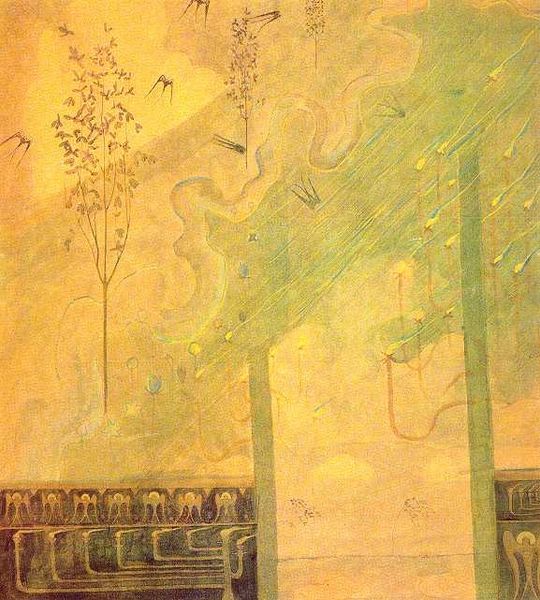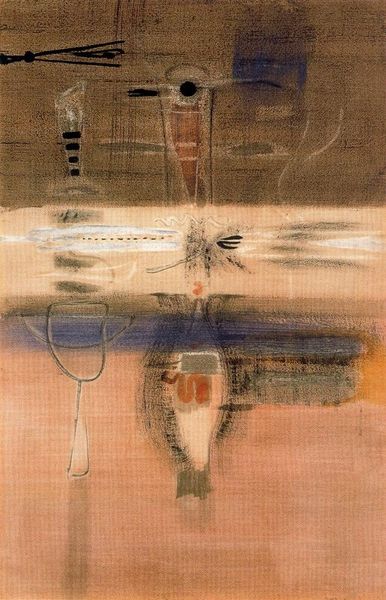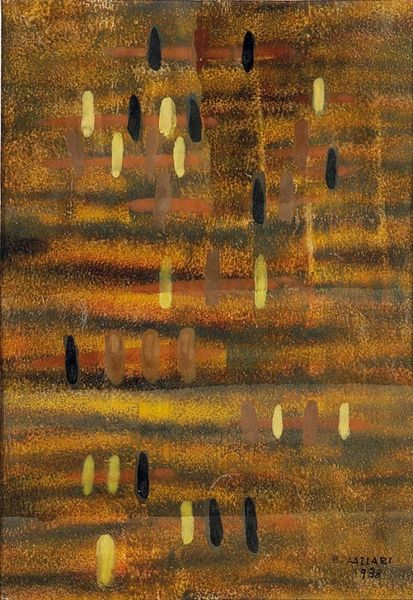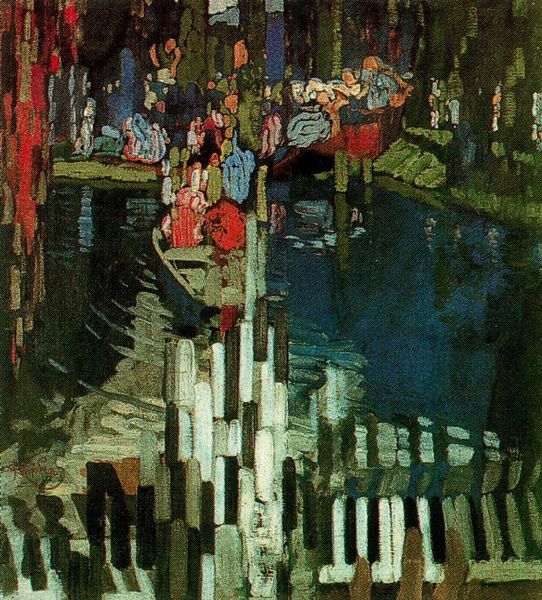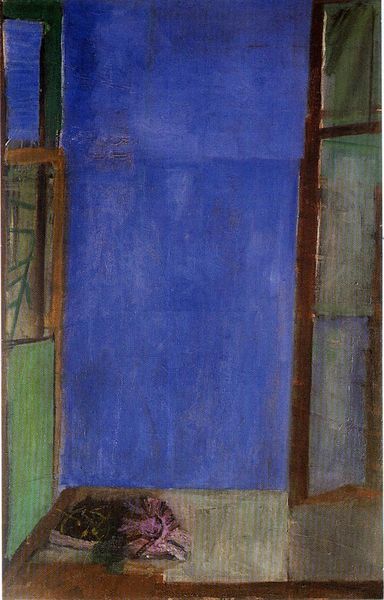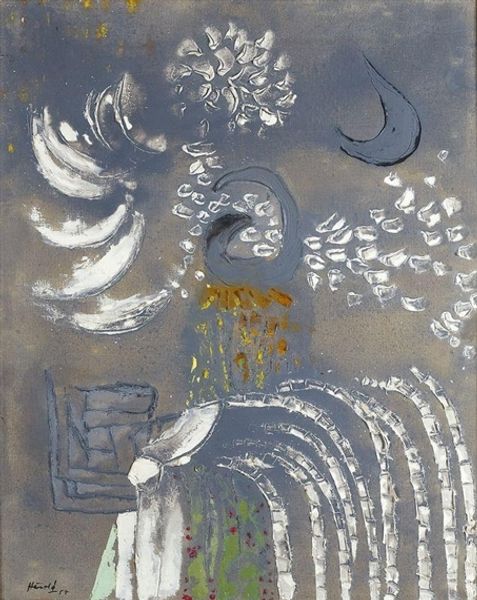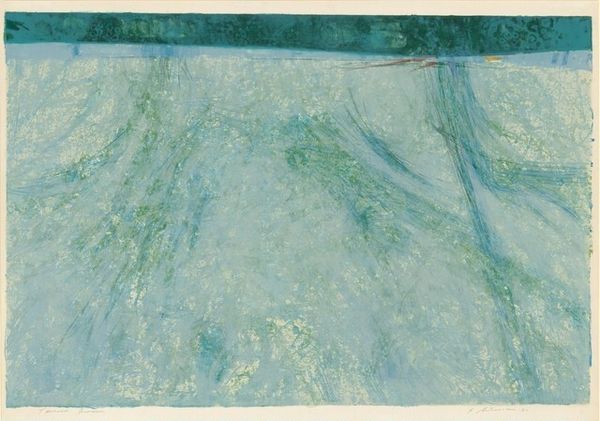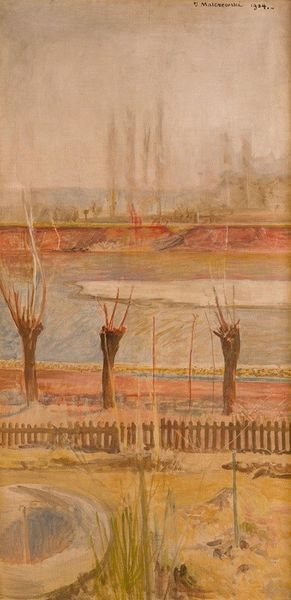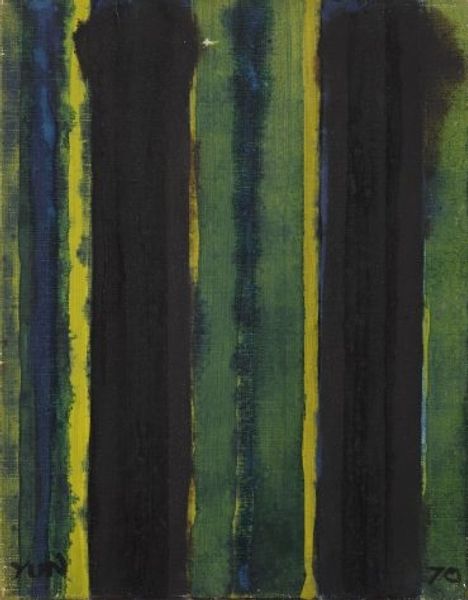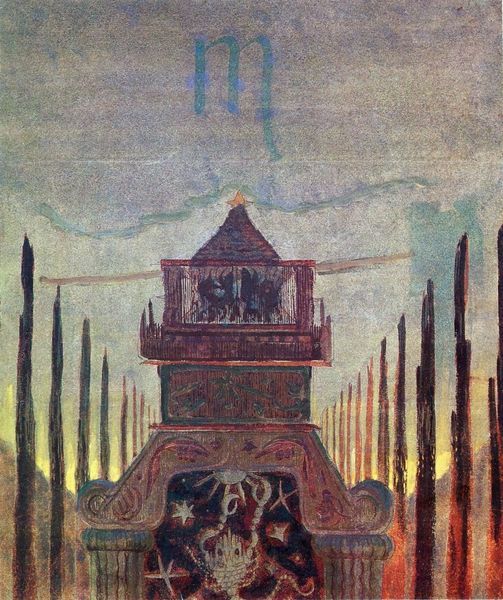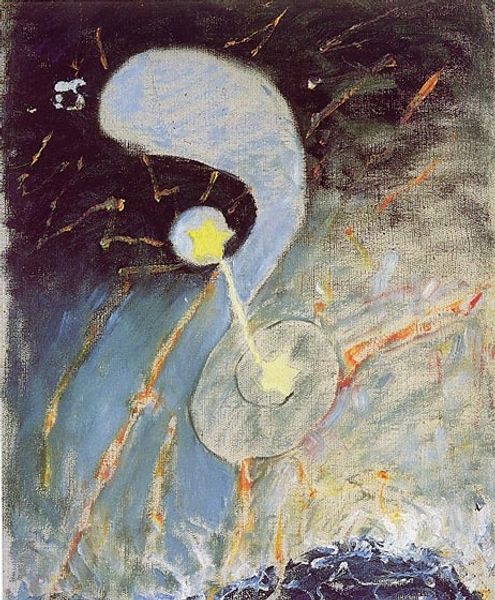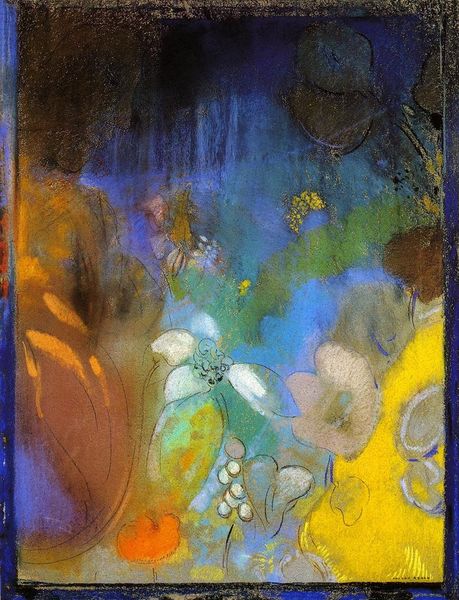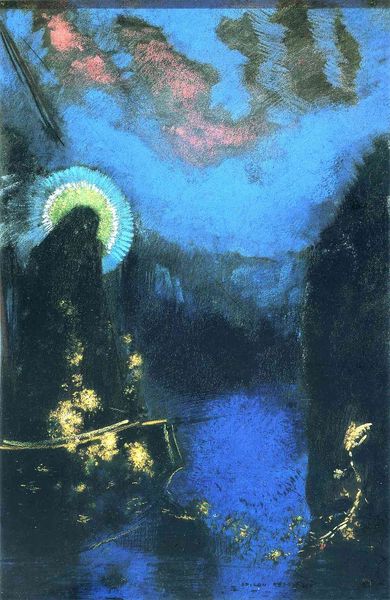
watercolor
#
landscape
#
watercolor
#
geometric
#
symbolism
#
watercolor
Dimensions: 60.3 x 57 cm
Copyright: Public domain
Curator: Mikalojus Konstantinas Ciurlionis created this watercolor, "Scherzo (Sonata of the Sun)," in 1907. It’s an interesting example of the Symbolist landscape. Editor: My first thought is a strange, quiet harmony. The colours are muted, the composition relatively simple. It reminds me of early attempts at color photography, with those slightly surreal greens and yellows. Curator: Ciurlionis saw color and music intrinsically linked. In "Sonata of the Sun", consider the "scherzo," traditionally a lively, playful movement in a symphony. Is that playfulness present here for you? Editor: There's a stillness that contradicts that title somewhat. Look at the repeated vertical elements: the trees, the fence posts. They create a very deliberate rhythm, but one that’s far from frantic. Perhaps, a slowed down, almost meditative version of a scherzo. Curator: Interesting. Note also the bridges: one rendered clearly and one more implied in the composition. The motif of bridges, in Ciurlionis's work, can be understood as a link between earthly and spiritual realms. Editor: Those bridges really draw the eye. One could spend a long time tracing those horizontal lines against all that verticality. Also the materiality… You know, the very looseness of the watercolor is interesting when juxtaposed with the crisp geometric forms and very solid shapes in the middle of the painting. Curator: It could be read as earthly order struggling to contain some more nebulous, transcendental presence. Do you get a sense of place here? It feels at once universal and strangely familiar to me. Editor: I’m not sure "place" is quite the right word. More a… symbolic zone. An idealized, structured landscape more than anywhere that could be mapped or visited. It’s all about suggestion. Curator: Suggestion is key. For me, it's an invocation of cultural memory; how landscapes often become encoded with cultural significance. Editor: It definitely invites contemplation on memory, especially how we organize sensory details, distilling experience down to its most fundamental elements. Curator: Well, on that note, I think we've started to unlock some of this unusual painting's complexities and nuances. Editor: Indeed. Its formal quietness, ultimately, creates a potent symbolic space.
Comments
No comments
Be the first to comment and join the conversation on the ultimate creative platform.
